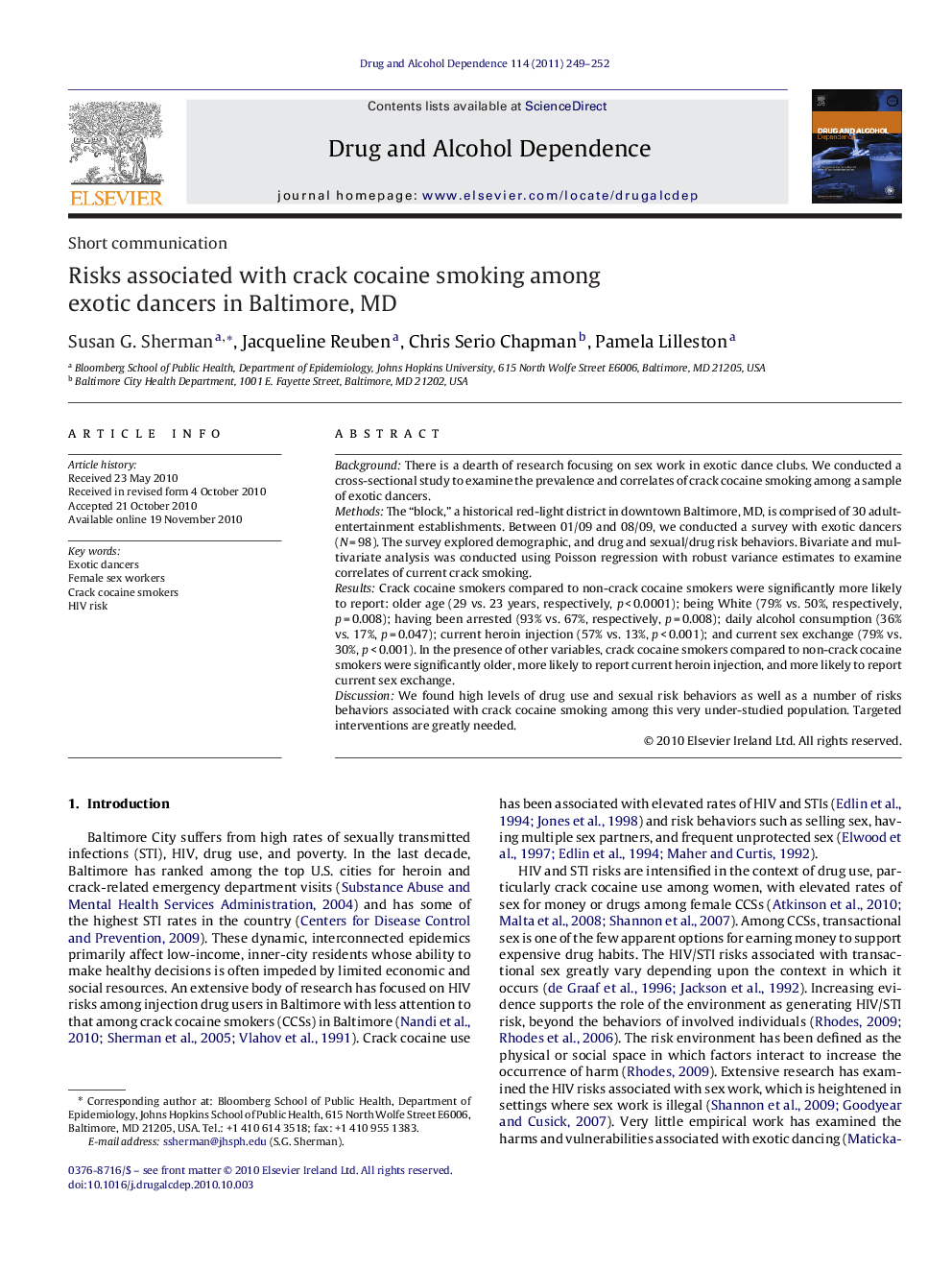| Article ID | Journal | Published Year | Pages | File Type |
|---|---|---|---|---|
| 1070358 | Drug and Alcohol Dependence | 2011 | 4 Pages |
BackgroundThere is a dearth of research focusing on sex work in exotic dance clubs. We conducted a cross-sectional study to examine the prevalence and correlates of crack cocaine smoking among a sample of exotic dancers.MethodsThe “block,” a historical red-light district in downtown Baltimore, MD, is comprised of 30 adult-entertainment establishments. Between 01/09 and 08/09, we conducted a survey with exotic dancers (N = 98). The survey explored demographic, and drug and sexual/drug risk behaviors. Bivariate and multivariate analysis was conducted using Poisson regression with robust variance estimates to examine correlates of current crack smoking.ResultsCrack cocaine smokers compared to non-crack cocaine smokers were significantly more likely to report: older age (29 vs. 23 years, respectively, p < 0.0001); being White (79% vs. 50%, respectively, p = 0.008); having been arrested (93% vs. 67%, respectively, p = 0.008); daily alcohol consumption (36% vs. 17%, p = 0.047); current heroin injection (57% vs. 13%, p < 0.001); and current sex exchange (79% vs. 30%, p < 0.001). In the presence of other variables, crack cocaine smokers compared to non-crack cocaine smokers were significantly older, more likely to report current heroin injection, and more likely to report current sex exchange.DiscussionWe found high levels of drug use and sexual risk behaviors as well as a number of risks behaviors associated with crack cocaine smoking among this very under-studied population. Targeted interventions are greatly needed.
